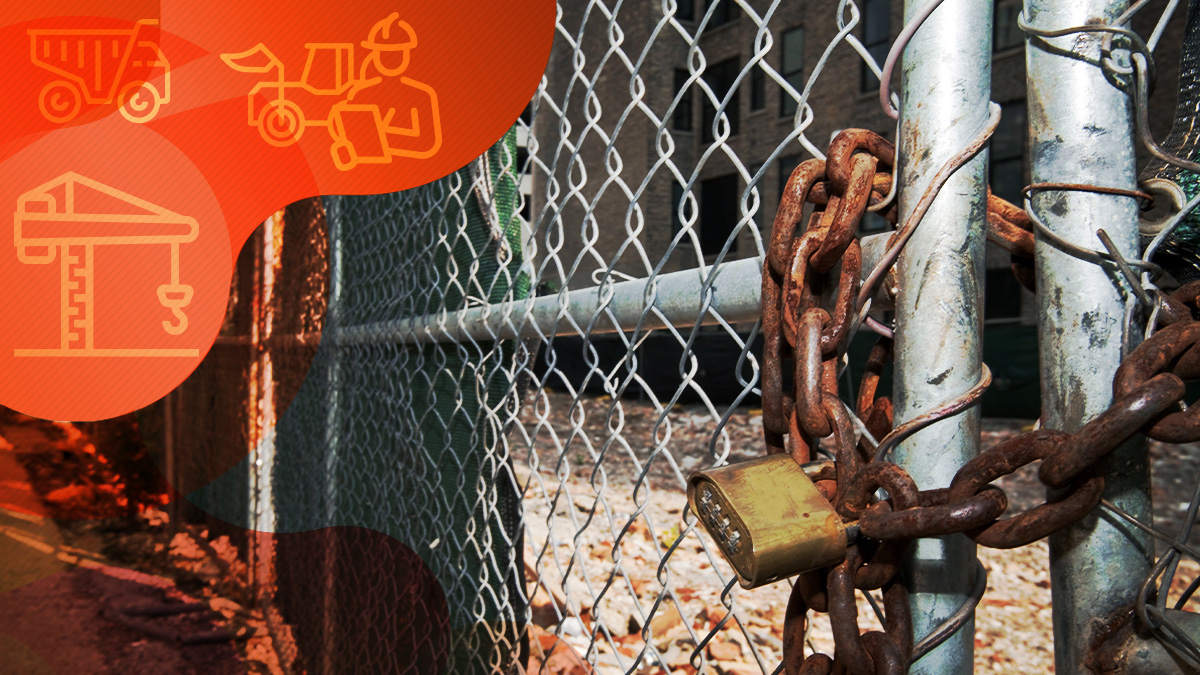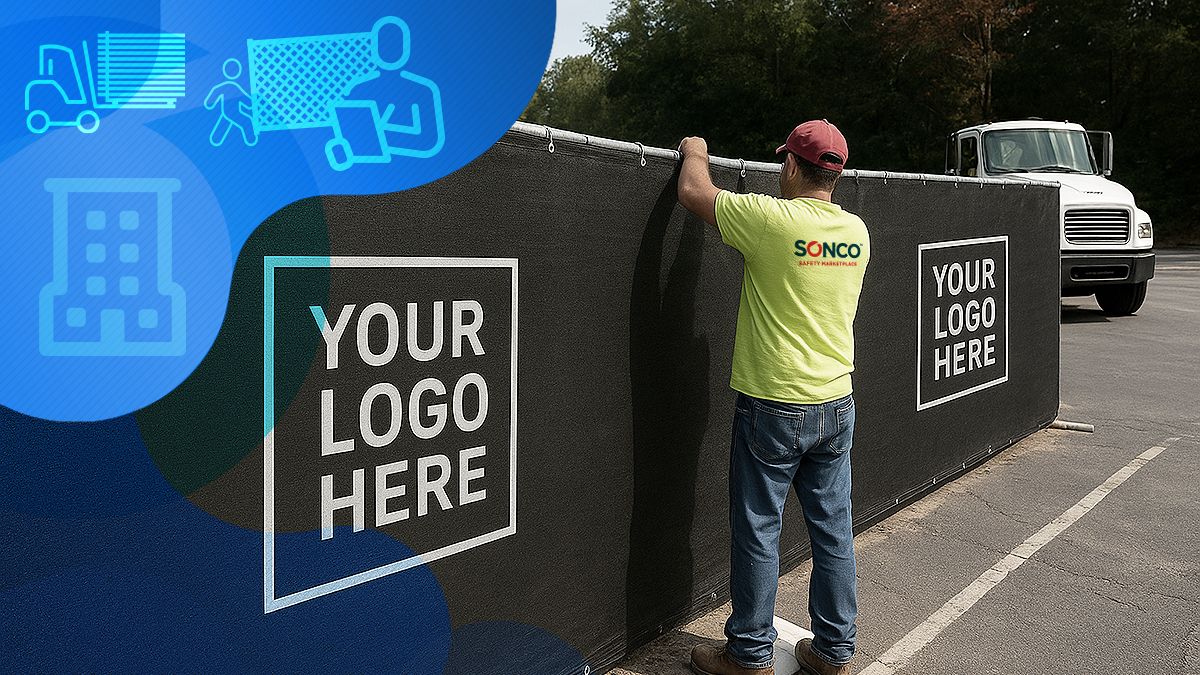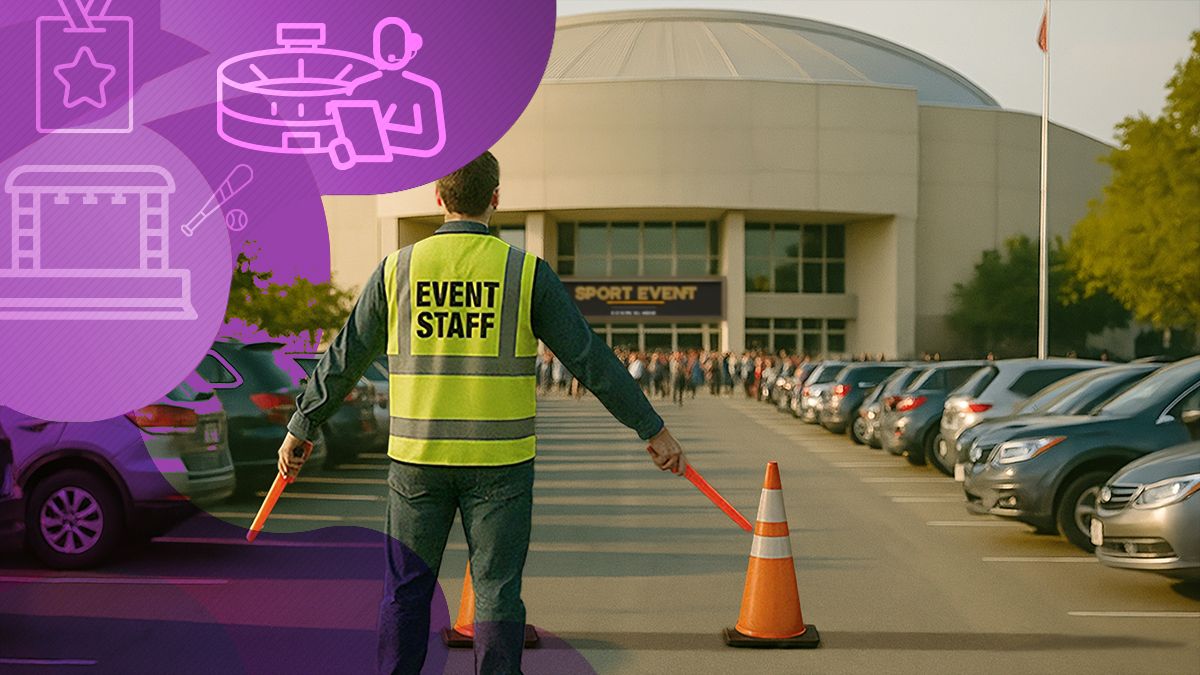Temporary Fence Maintenance Guide and Checklist
Discover the essential steps for maintaining your temporary fence. Regular cleaning, preventing rust, and ensuring stability are key to extending its lifespan. Keep reading to learn more!

Temporary fencing is a cost-effective, efficient way to control access to and secure your site. It is a wise investment because it can be used over and over again, moved from site to site, and is very low maintenance.
However, wear and tear from regular use can affect the appearance of temporary fence panels and even shorten their lifespan if they are not properly maintained.
Poorly maintained chain-link fence panels may also be more prone to damage, especially if the weather is extremely hot or cold, windy, rainy, or excessively humid or arid.
It is important to do fence maintenance on a regular basis to keep your investment looking its best and doing the job it was intended to do.
Why is fence maintenance important?
Perimeter fencing is a significant investment. It restricts access to your site or property, deterring unauthorized individuals from entering your secured space. It keeps your perimeter secure and can also display your logo or message if you use screens.
It is in your best interest to prolong the lifespan of your temporary fencing and here’s why:
- Avoid costly fence repairs. A minor issue that isn’t addressed can turn into a big issue that requires a considerable repair cost or replacement.
- Protect your investment. Temporary fencing may be cost-effective because it is versatile and can be reused over and over, but it isn’t cheap. A well-built, well-maintained fence can last for years.
- Ensure your fence’s functionality. The primary functions of a fence are privacy and security. Maintaining it regularly keeps it structurally sound so that it can continue fulfilling those intended functions.
- Prevent your fence from deteriorating. The elements can wreak havoc on a fence. Rain, wind, extensive exposure to sunlight, and snow can lead to wear and tear over time. Performing routine maintenance on your fence can help you catch little issues before they become big (and expensive) problems.
How long does a fence last?
There are several factors that go into the longevity of a temporary fence. Usage, weather conditions, quality of construction, and the materials used to make it all come into play. A well-made, well-maintained fence can last for years, a decade or even more.
The longer lasting, more durable temporary fences are made from quality materials and are stabilized using Anchor Bases which are designed specifically for keeping temporary fence panels secure and stable, unlike sandbags or concrete blocks.


Environmental factors like the weather also impact the longevity of a temporary fence.
Excessive weather affects fencing, but there are other environmental factors like mud or if the fence is near a worksite that uses chemical sprays, sandblasting, or other issues that could bleed over onto the fence.
Fence cleaning and other maintenance steps
Cleaning your fence may take a little time, but it will help keep it in good shape for years to come. Chain-link fencing typically doesn’t require a great deal of maintenance, but regular washing and inspection can keep it looking good and functioning as it should.
Assemble Your Tools
Get your tools together so you can streamline your fence cleaning process. Cleaning your temporary fence is straightforward. The only tools you will need are:
- Garden hose with sprayer nozzle
- Bucket
- Dish soap or gentle detergent
- Cleaning brush for tackling more difficult debris
- Towel
Rinse
Use the garden hose to rinse the entire fence. The sprayer nozzle should be sufficient for removing most debris and dirt. Start at the top and spray downward, fanning back and forth.
Scrub
Make some soapy water in the bucket and use the brush to remove more stubborn debris such as bird droppings.
Rinse Again
Use the garden hose to rinse the fence completely.
Towel Dry
Use your towel to wipe off the excess moisture, paying close attention to the bottom portion of the fence.
Inspect
Inspect the fence, looking for areas of rust or damage. Look along the chain-links, the posts, caps, and the wire along the bottom. The links on the bottom can be prone to rust so make sure you inspect that area closely.
Apply Rust Protection if Necessary
If you don’t properly treat your chain-link fence, it can rust, especially along the bottom where it is closest to dirt and grass, exposing it to moisture. While there are already rust-resistant fences available, if your fence isn’t rust-resistant from manufacturing, you can apply a rust protection coat yourself.
Proper Storage
When your chain-link fence panels are not in use, proper storage is essential to prevent damage such as bending, warping, or tearing of the mesh. We recommend using the Sollage Fence Rack, featuring a reinforced base with extended feet and vertical sidebars, ensuring your panels stay securely in place during storage or transportation. With space for over two dozen panels, it optimizes storage space.


How to keep your temporary fence from falling and becoming damaged?
Temporary fence panels tend to be more low maintenance, but some upkeep will be necessary. Using temporary fence anchors can prevent falling and keep your fencing from becoming damaged.
This is a very effective stabilization technique that can keep your fencing upright in all types of weather and other situations that could cause it to fall. Taking this step can save you a lot of time, money, and headaches because fixing metal fence panels is a lot more expensive than securing them.
An Anchor Stand offers much more durability than the more common tube stands. They are low profile but high-vis with the added benefit that they can be reused, repaired, stored, and moved quite easily. You can also combine them with other anchor products such as weights which will make your fencing even more stable and secure.
Anchor Weight bases are the high-quality alternative to sandbags. They reduce trips and falls due to their high visibility, but they also keep the fence in place. You can easily transport them and store them so they can be used over and over, which is boosts your return on investment.
Anchor Blocks are the superior alternative to concrete blocks. Anchor Blocks will keep your fencing upright and are specifically designed for temporary fencing. They are designed for the specific purpose of keeping your fence panels secure, which is why they're much safer and more reliable than other methods.
Make sure that you are using the right types of weights and anchors for your fencing. Sandbags, concrete blocks, and other items are not intended for that use and could damage your fence, increase your liability, not to mention make your worksite less secure.
Expert Tips on Temporary Fencing
Fencing may not be a very glamorous or compelling topic like other aspects of your worksite, but it is an integral part of keeping those more glamorous and compelling things contained in your worksite safe and secure.
The more you know about fencing, how to care for it, and how to secure it, the better it will serve you for many years to come.
Take some time to look around at the many resource articles we provide that are intended to help you choose the right fencing for your project or worksite and help you stabilize it.
You can begin with our general reference guide and go from there. There’s a lot that goes into providing a safe, secure perimeter and we want to make sure you get the solution that fits your needs best.
Trend now

Fence Privacy Screen: The Missed Revenue for Rental Companies
Grow profits by over 100% with fence privacy screens. See the numbers, customer benefits, and how SONCO makes it simple.

Greener Shows, Greater Impact: Sustainability in the Live Music Industry
In a competitive market where experience and perception impacts attendance, sustainability is a business advantage as well as a moral responsibility.

Parking Lot Safety Tips for Venues and Arenas
A safe and efficient parking lot sets the tone for the entire event experience, starting from the moment guests arrive.





